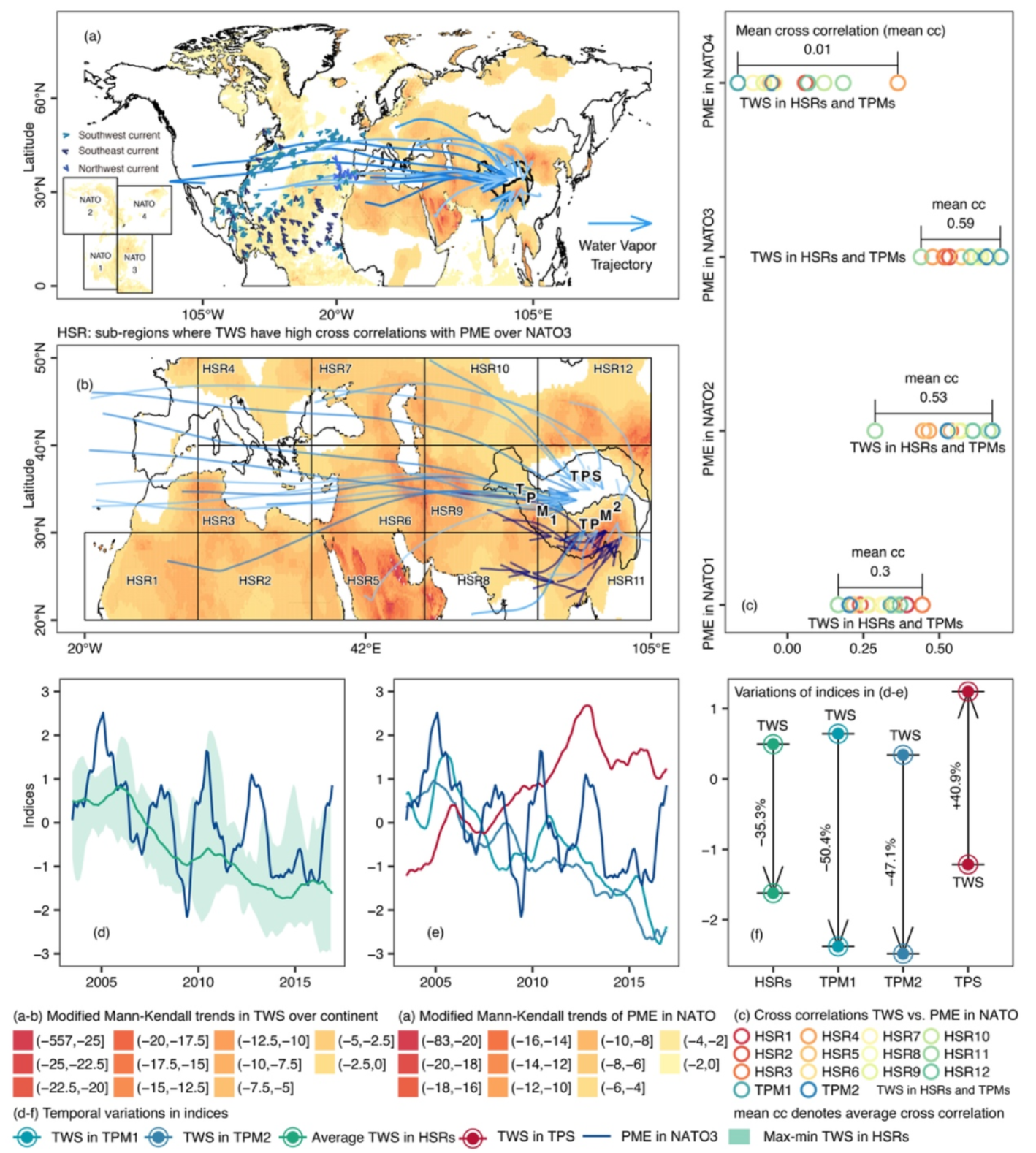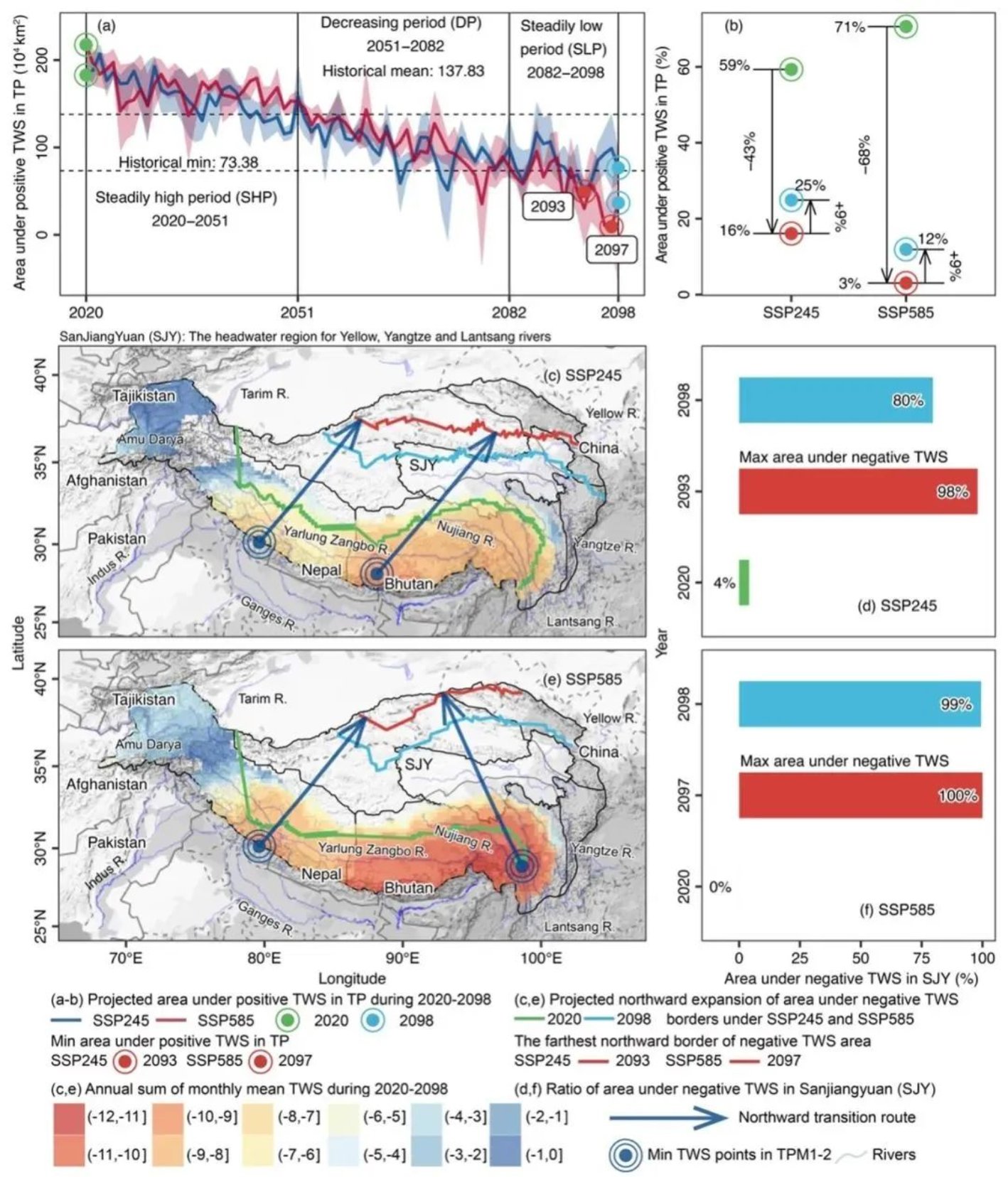Focusing on “the Roof of World”——Revealing the Principle about the Water Cycle of “Asian Water Towers”

On March 2, the team of Professor Zhang Qiang from the Frontier Research Institute of Environment and Ecology of Beijing Normal University published an important research result entitled "Oceanic climate changes threaten the sustainability of Asia's water tower" in Nature online, which made an important achievements in the research on the water cycle of Asian water towers.
The Qinghai-Tibet Plateau is the highest plateau in the world, known as the "roof of the world" and "the third pole", also known as the water tower of Asia. In the context of global warming, the continued reduction of glaciers in the Asian water tower area will seriously threaten the sustainability of the meltwater supply of the Asian water tower glaciers, which may lead to a series of unpredictable social, environmental and ecological crises. However, the evolution of terrestrial water storage on the Qinghai-Tibet Plateau has significant spatial heterogeneity, and the mechanism of water cycle impact and atmospheric dynamics driving mechanism behind it are still remaining undiscovered.
On the basis of in-depth analysis of the water vapor cycle process of the Asian water tower, the team comprehensively quantified the atmospheric circulation process of the Qinghai-Tibet Plateau to solve the difficult problems in the research of the Asian water tower. They discussed and elucidated the spatial heterogeneity of the evolution of terrestrial water storage on the Qinghai-Tibet Plateau and the underlying atmospheric dynamics (Fig. 1). The results of the study show that the decline of land water storage in the Asian High Mountains south of the Tibetan Plateau is mainly affected by the precipitation-evaporation (PME) deficit from the southeastern North Atlantic transported by the westerly belt. In addition, the study also confirmed through dynamic simulation that the Asian high mountain area prevented the further spread of PME deficit to the central Tibetan Plateau, which in turn triggered the increase of land water storage there.

In addition, they further predicted the areas that may be affected by the shortage of land water storage in the future (Figure 2). Projections under different climate scenarios show that the Qinghai-Tibet Plateau is expected to be affected by land water storage deficit by the end of this century as high as 84% (SSP245) or 97% (SSP585). This will seriously threaten the sustainability of the water supply of major rivers in Asia, which in turn may exacerbate the water crisis in downstream regions.

Professor Zhang Qiang of the Frontier Research Institute of Environment and Ecology of Beijing Normal University (Zhuhai) is the first/corresponding author of the paper, and Shen Zexi, doctoral candidate of Beijing Normal University, is the co-first/corresponding author of the paper. Collaborators on the paper also include Associate Professor Yadu Pokhrel from Michigan State University, Professor Daniel Farinotti from ETH Zurich, Professor Vijay P. Singh from Texas A&M University, Professor Xu Chongyu from the University of Oslo, Senior Engineer Wu Wenhuan from Beijing Institute of Geology of Nuclear Industry, and Wang Gang from Beijing Normal University.
reference:DOI: 10.1038/s41586-022-05643-8


